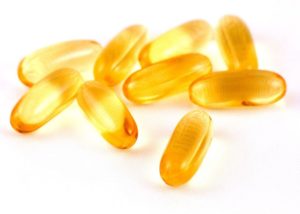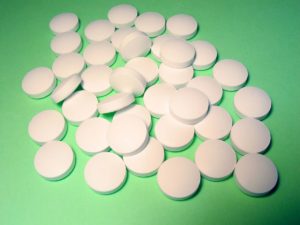![]() Another study was just published with worrisome findings about phthalates. Phthalates are a group of chemicals used widely in common consumer products such as food packaging, toys, medical devices, medications, and personal care products. They are endocrine disruptors (can interfere with normal hormonal function) and are linked to a number of health problems (here, here, and here).
Another study was just published with worrisome findings about phthalates. Phthalates are a group of chemicals used widely in common consumer products such as food packaging, toys, medical devices, medications, and personal care products. They are endocrine disruptors (can interfere with normal hormonal function) and are linked to a number of health problems (here, here, and here).
The study looked at urban Australian men and found that the higher the level of phthalates, the higher the rate of cardiovascular disease, type-2 diabetes, and hypertension. The researchers also found that higher levels of chronic low-grade inflammatory biomarkers (meaning higher levels of low-grade inflammation) was associated with higher levels of phthalates. All these findings confirm what other studies, done in other countries, have found.
Phthalates, which are measured in the urine, were detected in 99.96% of the 1504 men. Eating a western dietary pattern (fast food, highly processed, low fiber) was also associated with higher phthalate levels. However, they did not find an association of phthalate levels with asthma and depression. From Science Daily:
Everyday chemicals linked to chronic disease in men
Chemicals found in everyday plastics materials are linked to cardiovascular disease, type-2 diabetes and high blood pressure in men, according to Australian researchers. Researchers from the University of Adelaide and the South Australian Health and Medical Research Institute (SAHMRI) investigated the independent association between chronic diseases among men and concentrations of potentially harmful chemicals known as phthalates.
Phthalates are a group of chemicals widely used in common consumer products, such as food packaging and wrappings, toys, medications, and even medical devices. Researchers found that of the 1500 Australian men tested, phthalates were detected in urine samples of 99.6% of those aged 35 and over. "We found that the prevalence of cardiovascular disease, type-2 diabetes and high blood pressure increased among those men with higher total phthalate levels," says senior author Associate Professor Zumin Shi, from the University of Adelaide's Adelaide Medical School and the Freemasons Foundation Centre for Men's Health, and a member of SAHMRI's Nutrition & Metabolism theme.
"While we still don't understand the exact reasons why phthalates are independently linked to disease, we do know the chemicals impact on the human endocrine system, which controls hormone release that regulate the body's growth, metabolism, and sexual development and function. "In addition to chronic diseases, higher phthalate levels were associated with increased levels of a range of inflammatory biomarkers in the body," he says.
Age and western diets are directly associated with higher concentrations of phthalates. Previous studies have shown that men who ate less fresh fruit and vegetables and more processed and packaged foods, and drank carbonated soft drinks, have higher levels of phthalates in their urine.... Associate Professor Shi says that although the studies were conducted in men, the findings are also likely to be relevant to women. "While further research is required, reducing environmental phthalates exposure where possible, along with the adoption of healthier lifestyles, may help to reduce the risk of chronic disease," he says. [Original study.]

 Once again several studies found health benefits associated with drinking coffee daily - this time "reduced risk of death" in 2 studies, and in one study a reduced risk of gallbladder cancer.
Once again several studies found health benefits associated with drinking coffee daily - this time "reduced risk of death" in 2 studies, and in one study a reduced risk of gallbladder cancer. The use of nanomaterials has been really increasing in recent years without us really understanding if nanoparticles have negative health effects, and if they travel to the brain or other organs in the human body.
The use of nanomaterials has been really increasing in recent years without us really understanding if nanoparticles have negative health effects, and if they travel to the brain or other organs in the human body.  A recent study looking at high dose supplementation of vitamin D found that it did not prevent cardiovascular disease. This study came about because of earlier studies observing that there is a higher incidence of cardiovascular disease in persons with low vitamin D levels (as measured in their blood). But such results from observational studies need rigorous testing in studies where people are randomly assigned to groups, and that are "double-blind" (no one knows who is getting the vitamin D until the end of the study) to eliminate bias. And this is what was done in this study, with the result that monthly high doses of vitamin D3 for 3 years did not prevent cardiovascular disease (including stroke, heart attacks, hypertension, etc) - as seen in that there were no group differences between the vitamin D and placebo groups. Finding no effects are "
A recent study looking at high dose supplementation of vitamin D found that it did not prevent cardiovascular disease. This study came about because of earlier studies observing that there is a higher incidence of cardiovascular disease in persons with low vitamin D levels (as measured in their blood). But such results from observational studies need rigorous testing in studies where people are randomly assigned to groups, and that are "double-blind" (no one knows who is getting the vitamin D until the end of the study) to eliminate bias. And this is what was done in this study, with the result that monthly high doses of vitamin D3 for 3 years did not prevent cardiovascular disease (including stroke, heart attacks, hypertension, etc) - as seen in that there were no group differences between the vitamin D and placebo groups. Finding no effects are " Is this really a surprise to anyone at this point? According to a
Is this really a surprise to anyone at this point? According to a  A new study has been released that reminds us that all drugs (whether prescription or non-prescription) have side-effects. This time a
A new study has been released that reminds us that all drugs (whether prescription or non-prescription) have side-effects. This time a  This past week a study was published linking 8 to 10 portions of fruits and vegetables per day with a lower risk of early death, cancer, heart disease, and stroke. This confirms other research linking many daily servings of fruits and vegetables with various health benefits. For example, the study findings discussed in the
This past week a study was published linking 8 to 10 portions of fruits and vegetables per day with a lower risk of early death, cancer, heart disease, and stroke. This confirms other research linking many daily servings of fruits and vegetables with various health benefits. For example, the study findings discussed in the  Do you want to live longer and be healthy at the same time? Some possible ways may be to restrict the calories in the diet (every day) or to practice intermittent calorie restriction (a fasting mimicking diet a few days a month or even each week, such as
Do you want to live longer and be healthy at the same time? Some possible ways may be to restrict the calories in the diet (every day) or to practice intermittent calorie restriction (a fasting mimicking diet a few days a month or even each week, such as